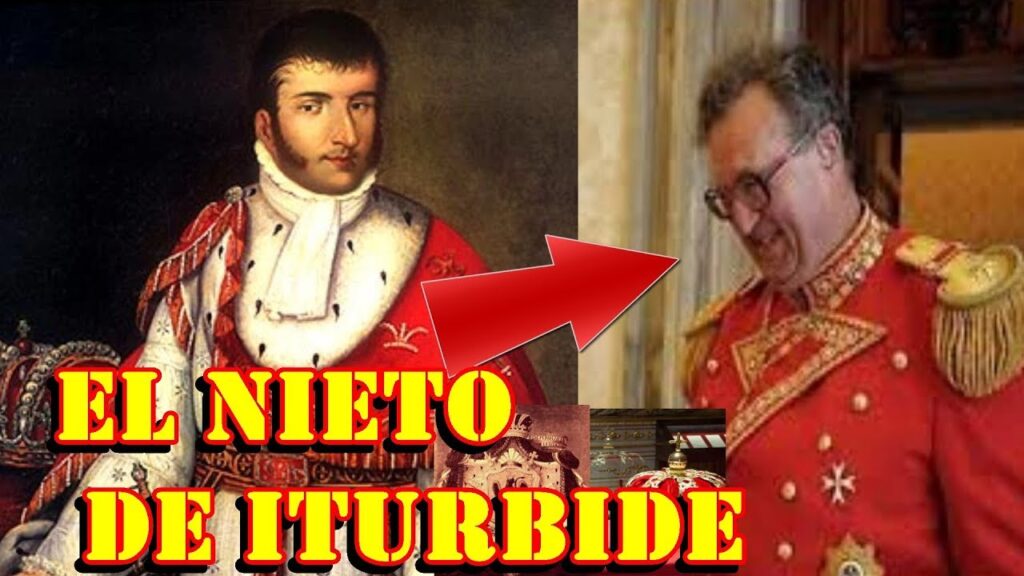The Origins of the Iturbide House: Mexico’s Royal Legacy
The Iturbide House, a grand edifice nestled in the heart of Mexico City, serves as a testament to the country’s brief flirtation with monarchy. Originally constructed in the 18th century, it was the palatial residence of Agustín de Iturbide, who became Emperor Agustín I following the Mexican War of Independence. During his short-lived empire from 1822 to 1823, the Iturbide House, or “Palacio de Iturbide” as it is locally known, became a symbol of Mexico’s aspirations for unity, stability, and prosperity. With its sumptuous Baroque design, the building exudes a sense of regal splendor that harks back to a pivotal time in Mexican history when the nation sought to establish a new identity separate from Spanish colonial rule.
The architecture of the Iturbide House is a fascinating mix of European influences and indigenous Mexican elements, mirroring the complexity of Agustín de Iturbide himself. A military commander of Spanish descent born in Mexico, Iturbide initially fought for the Spanish Crown before switching sides to fight for Mexico’s independence. His pivotal role in securing Mexico’s sovereignty earned him a place as a national hero and culminated in his ascension to the throne. The building’s ornate facades, adorned with stucco decoration and wrought-iron balconies, contrast with pre-Hispanic motifs that subtly infuse the decor, reflecting the cultural amalgamation that occurred during the post-independence era.
Despite Iturbide’s fall from power and eventual execution, the Iturbide House remains as a physical legacy of his controversial but undeniably influential reign. Today, the palace functions not as a royal residence but as an important cultural center, replete with art galleries and exhibition spaces that celebrate Mexico’s rich artistic traditions. Visitors can explore the meticulously restored rooms, adorned with artwork, and experience the echoes of past grandeur that once pervaded the halls of Mexico’s imperial household. The Iturbinslde House’s transformation from a symbol of monarchy to a bastion of culture exemplifies the fluid nature of Mexico’s national identity and its ability to repurpose the past for the enrichment of its future.
Descendants of Royalty: The Ongoing Tale of the Iturbide Family
The story of Mexican royalty is a lesser-known chapter in the annals of history, yet it is as fascinating as any European monarchy tale. Central to this narrative is the Iturbide family, whose patriarch, Agustín de Iturbide, was crowned Emperor of Mexico after the country gained independence from Spain. His reign was short-lived, from 1822 to 1823, but the lineage he left behind continues to intrigue and captivate those interested in the bygone era of Mexican royalty.
Agustín de Iturbide’s ascension to the throne was a momentous event that symbolized the search for a national identity in post-colonial Mexico. Although his empire did not last, his descendants carried on the Iturbide name, nurturing their heritage with pride. The family’s royal ties afforded them a distinct place in Mexican society, even as the nation underwent significant transformations and embraced republicanism. The Iturbide family’s ongoing story is not just about their blue-blooded lineage but also reflects the cultural and political shifts that have shaped Mexico over the centuries.
The legacy of the Iturbide family is visible today as they remain custodians of a rich heritage, preserving artifacts and family heirlooms that attest to their regal past. The family, though not ruling nobility, often participates in cultural and historical commemorations, offering a living connection to Mexico’s imperial chapter. The Iturbide family’s existence serves as a testament to the complexities and enduring significance of Mexico’s past.
Despite their historical significance, the Iturbide family has experienced the ebb and flow of fortune just like any other. Their story is peppered with accounts of alliances, challenges, and the occasional resurgence in prominence, which often brings them back into the public eye. Their narrative is not simply a fossilized relic of history; it is an evolving saga that reflects the dynamism of human lives intersecting with the tides of time.
Today, the Iturbide family continues to be a subject of fascination and study for historians and the public alike. Each generation adds new chapters to the family’s tale, weaving their own accomplishments and experiences into the rich tapestry of their royal heritage. While the grandeur of the Iturbide empire may have faded, the descendants of this royal lineage ensure that the tale of the Iturbide family remains a living, breathing chronicle of Mexico’s illustrious history.
The Historical Influence of the Iturbide Legacy in Modern Mexico
The Iturbide legacy is a fascinating tapestry of influence and transformation that spans the entirety of Mexico’s rich tapestry. Augustin de Iturbide, who was a cornerstone figure in the Mexican War of Independence against Spain, left an indelible mark on the nation’s social, cultural, and political frameworks. Iturbide, often hailed as a national hero, proclaimed himself emperor of Mexico in 1822, establishing the First Mexican Empire, which, although short-lived, was the first semblance of an independent Mexican monarchy post Spanish rule.
Iturbide’s vision for Mexico included the union of all factions—Creoles, Mestizos, Indigenous, and Spaniards—under a single national identity. This attempt to form a cohesive national identity out of disparate social groups laid the groundwork for future attempts at nation-building. Although opinions on his reign are divided, the Iturbide dynasty’s initial efforts towards the creation of a united Mexican identity are still discussed in the intricate sociopolitical climate of modern Mexico.
The dissolution of the Empire and the execution of Iturbide in 1824 did not banish the influence of his legacy. The very flag he designed for the empire, featuring the colors green, white, and red, was adopted with modifications by successive governments and remains Mexico’s flag today— a perpetual reminder of his impact on the country’s national symbols. Moreover, the Plan of Iguala, a treaty proposed by Iturbide which guaranteed Mexico’s independence and established the Catholic religion and equality for Spaniards and Creoles, was a cornerstone document that would influence future constitutions.
Moreover, Iturbide’s legacy is reflected in the naming of cities and streets across Mexico, an illustration of his continued presence in the public consciousness. A particularly poignant example is the vibrant town of Iturbide in Nuevo Leon, which carries his name proudly, serving as a living monument to his complex role in Mexican history. In these spaces, the blend of Indigenous and European heritage that Iturbide advocated for is lived out in the daily experiences of the inhabitants.
Iturbide’s approach to governance, his advocacy for monarchy in a post-colonial context, and his attempts to stabilize Mexico during its early years of sovereignty, all continue to be subjects of debate among historians and scholars. His legacy is particularly palpable as modern Mexico navigates its own balance between diverse cultural histories and the push towards a singular national identity, a challenge that traces its roots back to the days of Iturbide’s ambitions for the Mexican empire.
Uncovering the Living History of La Casa de Iturbide in Contemporary Mexico
As you traverse the bustling streets of Mexico City, a bridge between past and present emerges in the form of La Casa de Iturbide. This iconic establishment, once home to Agustín de Iturbide, a leading figure in Mexico’s fight for independence from Spain, now serves as a testament to the rich historical narrative that has shaped modern Mexico. Visitors to La Casa de Iturbide are welcomed by an imposing façade that whispers tales of political intrigue and a nation’s struggle for sovereignty.
Walking through the ornately decorated rooms of La Casa de Iturbide, where carefully preserved artifacts and portraits line the walls, one gains an intimate glimpse into the life of a man who was crowned Emperor of Mexico after securing its freedom. The house, nestled in the heart of the country’s capital, not only reveals the complexities of Iturbide’s own story but also the turbulent times of the early 19th century. An array of cultural events and exhibitions hosted within these historic walls continue to bring the vibrancy of Mexican history to life, allowing the echoes of the past to resonate with contemporary visitors.
The influence of La Casa de Iturbide reaches beyond its physical confines, shedding light on the societal and political shifts that have occurred since the era of independence. It stands as a cultural hub, inviting scholars, history enthusiasts, and the general public alike to engage with the layered historical context of Mexico’s development. As you leave the threshold of La Casa de Iturbide, you carry with you a deeper understanding of the indelible marks left by key figures in Mexico’s storied past and their enduring impact on the nation’s identity.



